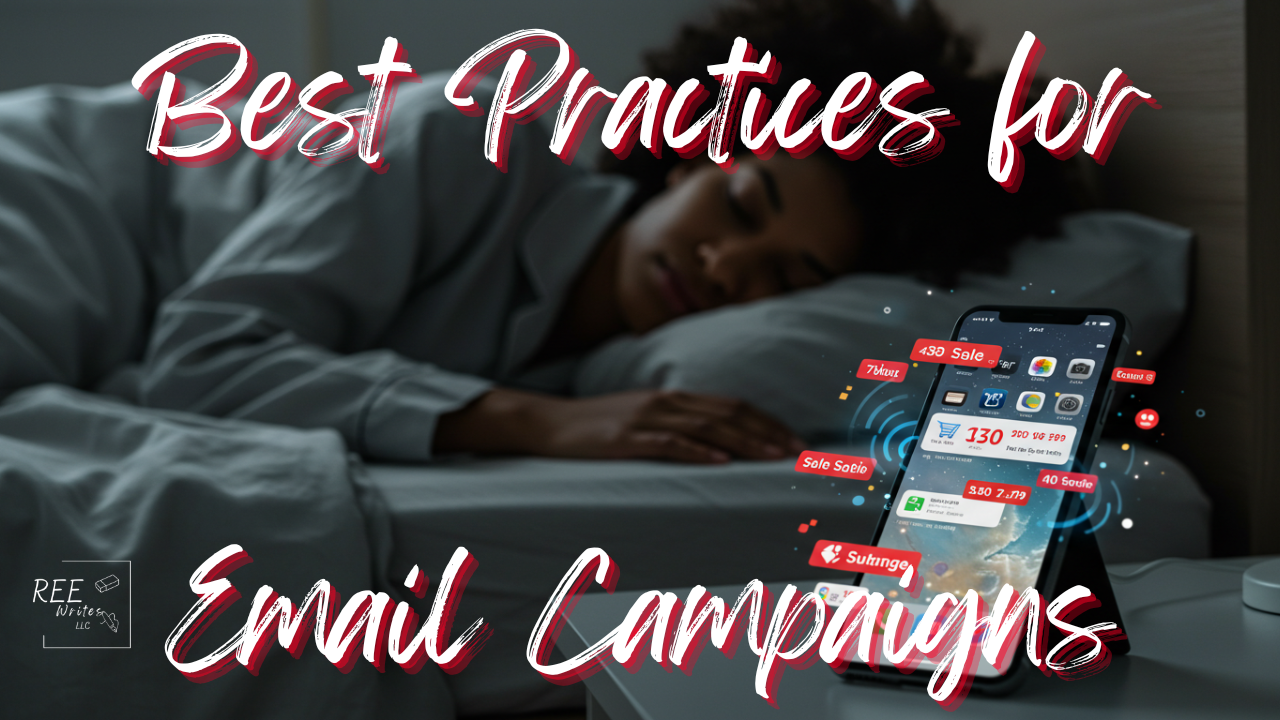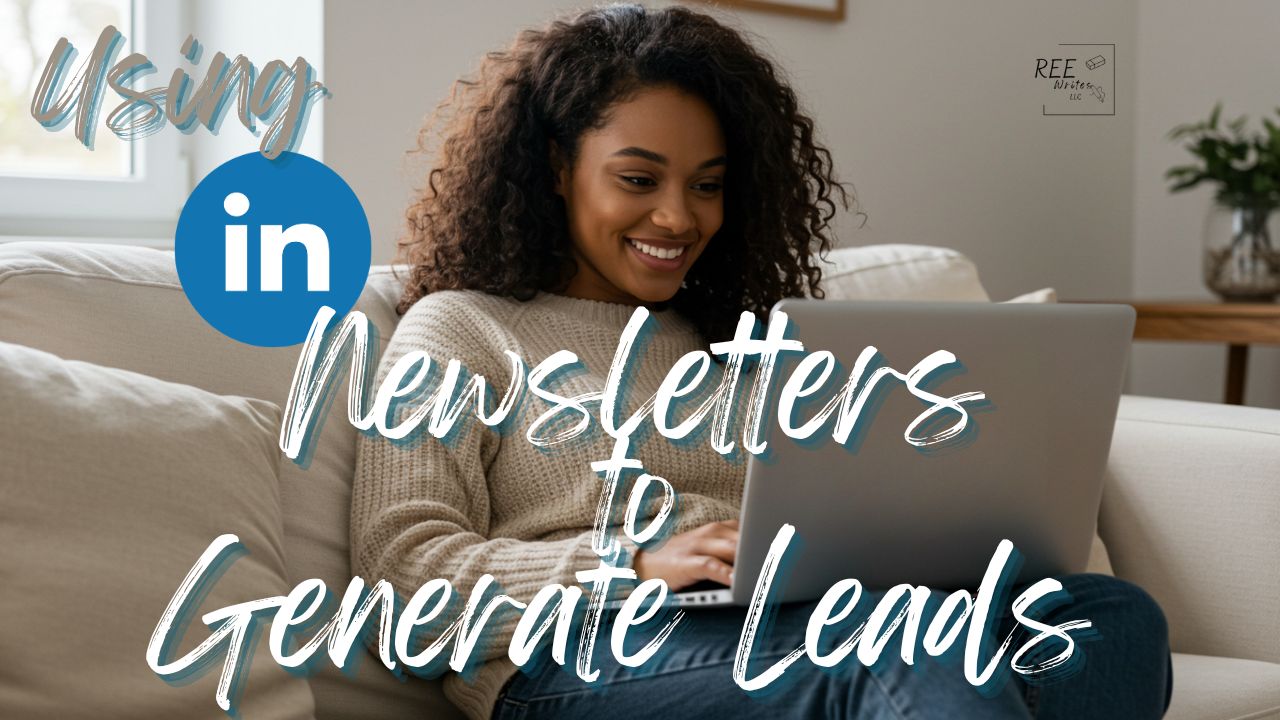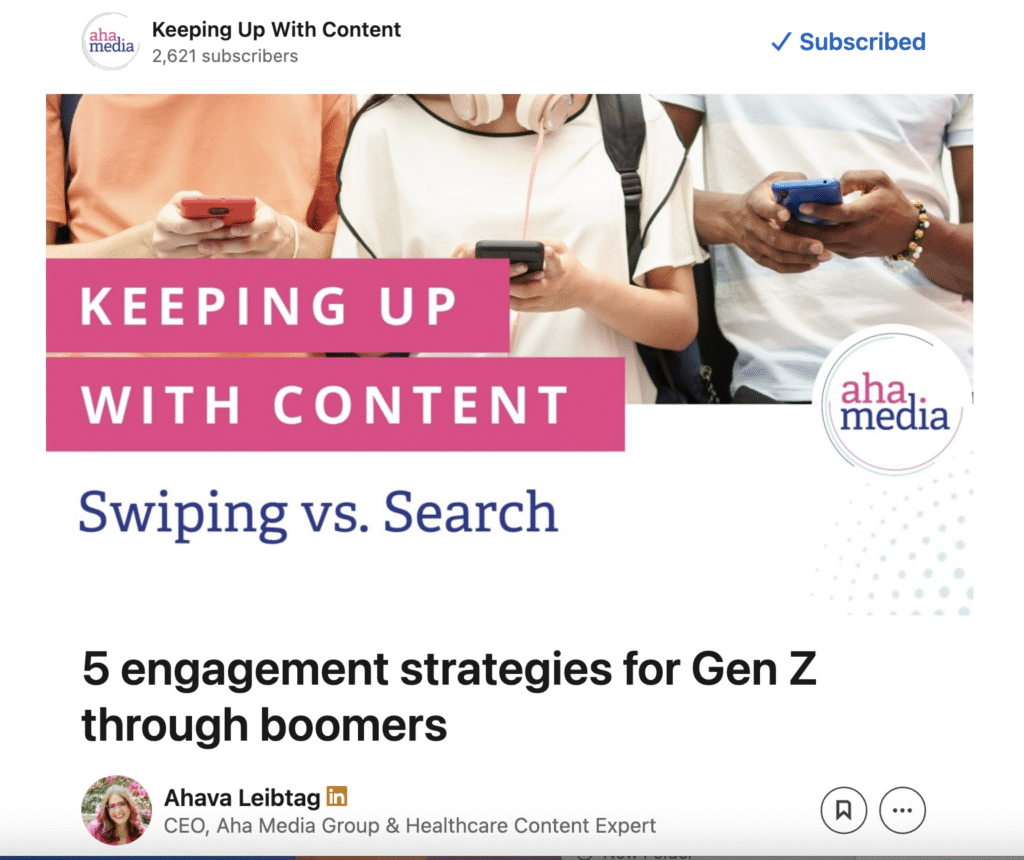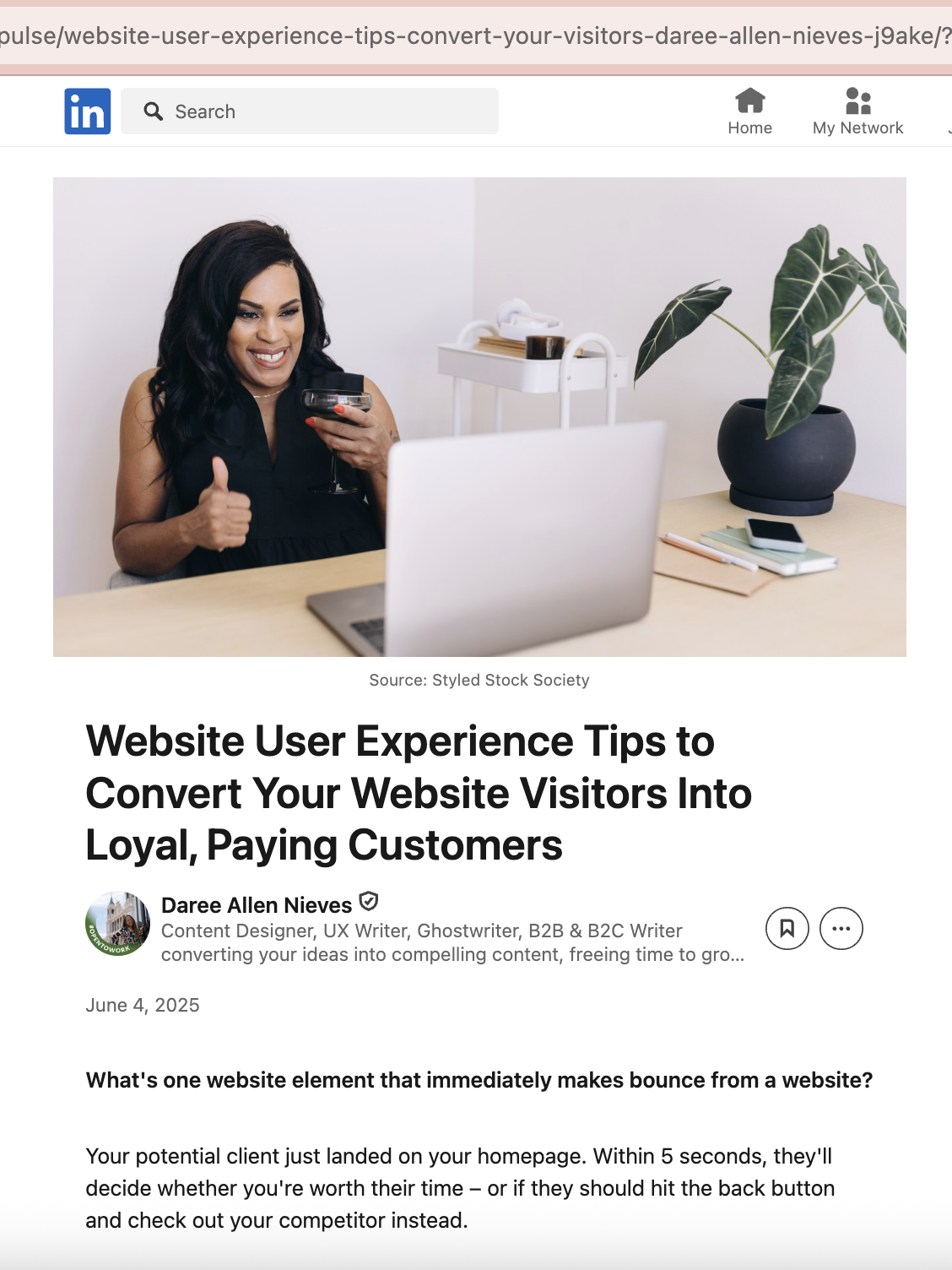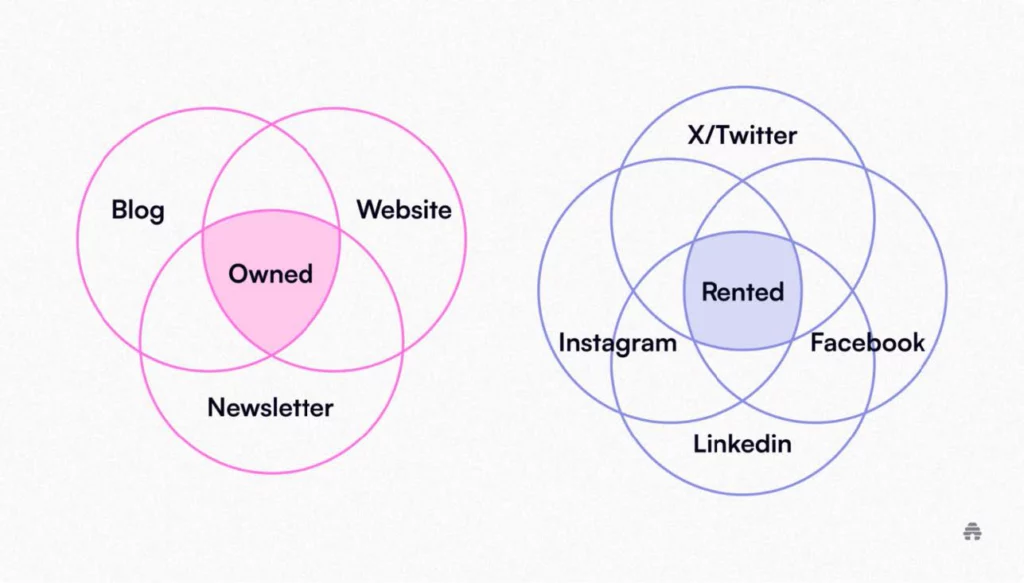Did you know the average revenue from email marketing will increase from 12.9 cents to 17 cents per email by 2026? As a one-person business, you need marketing tactics that work hard while you focus on what you do best.
Email marketing isn’t just about sending newsletters. It’s your direct line to customers, your sales assistant, and your brand builder all rolled in one.
Whether you’re just starting out or looking to improve your current email game, this guide will show you exactly how to create campaigns that convert browsers into buyers, and turn one-time customers into lifelong fans.
Contents
- Why Email Marketing Works Best for Solopreneurs
- Email provides direct access to your audience without an algorithm
- Cost-effective marketing channel with high return on investment
- Build personal relationships that larger companies can't
- Allows complete control over timing and messaging
- Creates predictable revenue streams through automated sequences
- Helps establish authority and expertise in your niche
- Essential Email Marketing Tools Every Solopreneur Needs
- Building Your Email List from Scratch
- Writing Subject Lines That Get Opened
- Creating Email Content That Converts
- Email Sequence Strategies That Drive Sales
- Measuring Success and Improving Performance
- Advanced Email Marketing Tactics for Growth
- Wrap-Up
Why Email Marketing Works Best for Solopreneurs
Running a solo business means making smart choices about where to invest your limited time and resources. Email marketing stands out as the perfect channel for solopreneurs, offering unique advantages that other marketing methods simply can’t match.
Email provides direct access to your audience without an algorithm

Unlike social media platforms where algorithm changes can suddenly tank your visibility, email gives you a direct line to your audience. Your messages land in their inbox without a middleman filtering your content.
This means the time you invest in creating email content won’t be wasted because of unexpected platform changes.
Social media platforms like Instagram, Facebook, and TikTok tweak their feed algorithms constantly, and one update can tank your visibility overnight. But emails reach inboxes directly, giving you more control over your message delivery.
Cost-effective marketing channel with high return on investment
Email marketing delivers an exceptional return on investment that few other channels can match, generating $36 to $40 for every dollar spent. That’s a 3,600% to 4,000% return on investment (ROI), making it particularly valuable for solopreneurs with tight budgets.
For solo AI startup founders, email marketing offers up to 4,000% ROI by delivering cost-effective, direct communication with audiences, while building trust from the earliest stages of business. This makes it one of the most powerful growth levers available to solopreneurs.
Build personal relationships that larger companies can’t
As a solopreneur, your personal touch is your advantage. Email allows you to connect directly with customers in a way that feels authentic and builds stronger relationships. You can write in your unique voice and share your expertise in a way that resonates with your audience.
Personalized emails have a 29% higher open rate and a 41% higher click-through rate (CTR) compared to non-personalized emails. Additionally, 76% of consumers say personalized messages were essential in enhancing their consideration of a brand.
Allows complete control over timing and messaging

With email marketing, you decide exactly when your message goes out and what it says. This level of control helps solopreneurs maximize the impact of every marketing effort.
Emails sit in inboxes and get read later, starred, forwarded, or saved, giving them a much longer shelf life than social media posts, which typically fade from feeds within hours. This extended visibility means your message has more time to make an impact.
Creates predictable revenue streams through automated sequences
Automated email sequences (autoresponders) can generate sales while you focus on other aspects of your business. In 2024, automated emails drove 37% of all email-generated sales despite accounting for just 2% of email volume. This efficiency is game-changing for solopreneurs.
For solopreneurs, email automation creates predictable revenue streams through carefully designed sequences. Marketing emails sent in response to behavioral triggers generate 10 times greater revenue than other marketing email types.
Helps establish authority and expertise in your niche

Regular emails that provide valuable information position you as an expert in your field. This builds trust with your audience and makes them more likely to buy from you when they need what you offer.
Nearly 50% of consumers made a purchase directly from an email in 2024, confirming email’s direct impact on driving sales. By consistently sharing your knowledge through email, you build credibility that converts to sales.
Essential Email Marketing Tools Every Solopreneur Needs
Choosing the right email marketing tools can make or break your success as a solopreneur. Let’s explore the essential tools you’ll need to create effective email campaigns without wasting time or money.
Free and paid email service providers comparison
As a solopreneur, you need to balance cost with functionality. Many email service providers offer free plans to get you started, with paid options as your list grows.
At the time of publication, MailerLite offers a free plan for up to 1,000 subscribers and 12,000 emails per month, with paid plans starting at just $10 monthly for 500 subscribers. Brevo (formerly Sendinblue) starts at $9 monthly and includes email automation and CRM tools.
Features to look for when choosing your platform
When selecting an email platform, prioritize features that will save you time and improve results. Look for automation capabilities, ease of use, and good deliverability rates.
Automation features are crucial for solopreneurs who are wearing multiple hats. Your email software should automate messages based on customer actions (like sign-ups or clicks) to save time and ensure consistent engagement without manual effort.
Integration with other business tools
Your email marketing platform should work seamlessly with your other business tools, such as your website, payment processor, and CRM system.
MailBluster, for example, offers integration with Zapier, CRM, and other tools to meet your specific needs. This connectivity allows you to create automated workflows that save time and provide a better experience for your subscribers.
Template libraries and design options for non-designers

As a solopreneur, you likely don’t have a design team. Look for platforms with ready-to-use templates that you can customize to match your brand.
AWeber offers over 700 email templates, providing users with a wide variety of designs to create professional-looking emails without design skills. Some platforms like AWeber also offer AI-powered design assistants that use your website and social media accounts to automatically build on-brand templates.
Analytics and tracking features that matter most
To improve your email marketing, you need to understand what’s working and what isn’t. Look for platforms with robust analytics that are easy to understand.
Key metrics to track include:
- open rate
- CTR
- conversion rate
- unsubscribe rate
- bounce rate
The best email platforms make these metrics easy to access and interpret, helping you make data-driven decisions about your email strategy.
Automation capabilities to save time and increase efficiency

Automation is a game-changer for solopreneurs, allowing you to set up sequences that run on autopilot while you focus on other aspects of your business.
Email automation features let you run your campaigns without constant attention, including drip campaigns for welcoming subscribers or launching new products. For example, AWeber’s campaign marketplace offers pre-made workflows with email templates for each campaign stage, saving you significant time and effort.
Building Your Email List from Scratch
Growing your email list is one of the most valuable activities you can undertake as a solopreneur. Let’s explore proven strategies to build a quality list from the ground up.
Lead magnets that attract your ideal customers

Lead magnets convert visitors into subscribers by offering something specific and valuable in exchange for an email address. Just ensure your lead magnet solves a real problem for your audience. For example:
- E-commerce: a discount code, free shipping, or early access to sales.
- Content creators: exclusive guides, templates, or educational resources that help your audience achieve a specific goal.
Opt-in form placement strategies for maximum signups
Where you place your opt-in forms can dramatically impact your conversion rates. Strategic placement ensures maximum visibility without disrupting the user experience.
Exit-intent popups activate when user behavior indicates they’re preparing to leave—like moving the cursor toward the browser close button. This timing matters because it gives you one final opportunity to connect with visitors who might otherwise never return. When combined with a compelling offer, conversion rates have been shown to exceed 3%.
Social media tactics to grow your subscriber base

Your social media presence can be a powerful tool for growing your email list, especially when you create strategic pathways for followers to become subscribers.
One effective strategy is to run or participate in a live event. Creating a valuable and exciting live event and publicizing it is a great way to get new people onto your list. You could do interviews, free training, or even networking sessions—just make sure to include a sign-up component. (This also works if you’re a vendor at someone else’s live event.)
Content upgrades that turn blog readers into subscribers
Content upgrades are bonus materials related to a specific blog post that readers can access by subscribing to your email list. They work because they’re highly relevant to what the reader is already interested in.
When blog readers are engaged with your content, offering them an expanded version, template, checklist, or additional resources related to that specific topic can be highly effective. Just make sure your content upgrade delivers additional value that’s worth sharing an email address to receive.
Networking and partnership opportunities for list growth

Collaborating with other business owners can help you reach new audiences and grow your list faster than you could on your own.
Virtual events like webinars work well for email list building. Partnering with other business owners to host webinars allows you to tap into each other’s audiences, creating a win-win situation where both parties grow their lists.
Ethical email list-building practices
Building your list ethically isn’t just the right thing to do—it also leads to better engagement, fewer spam complaints, and improved deliverability.
Always use double opt-in processes where subscribers confirm their email address, be transparent about what they’ll receive, and make it easy to unsubscribe. These practices help ensure that the people on your list actually want to hear from you, which leads to higher engagement rates and fewer spam complaints.
Writing Subject Lines That Get Opened
Your subject line is the gateway to your email content. No matter how amazing your email is, it won’t matter if no one opens it. Let’s explore how to craft subject lines that your audience will notice and click.
Psychology behind compelling subject lines

Understanding the psychological triggers that prompt people to open emails can dramatically improve your open rates. Two powerful motivators are curiosity and FOMO.
Humans have a natural desire for closure and don’t like having gaps in their knowledge. You can leverage this by leaving your subject line open-ended so subscribers will get curious, like a cliffhanger or open loop that can only be satisfied by opening the email. Similarly, you can trigger FOMO can be by adding an element of scarcity (limited availability) or urgency (limited time).
Power words that increase open rates
Certain words have been proven to grab attention and increase open rates. Using these strategically can give your emails a better chance of being noticed in a crowded inbox.
Email subject lines that include words implying time sensitivity, like “urgent,” “breaking,” “important,” or “alert” are proven to increase email open rates. However, it’s important to use these judiciously and ensure your email content delivers on the promise of urgency.
Personalization techniques that grab attention

Personalization goes beyond just including the recipient’s name. It’s about making the subject line relevant to the recipient’s interests, behaviors, or past interactions with your brand.
Personalized subject lines can include using the recipient’s name, referencing their location, or mentioning their recent activity on your website. For example, Jersey Mike’s Subs used “Mary, Earn double points today only” as an effective personalized subject line.
A/B testing strategies for subject line optimization
Testing different subject lines helps you understand what resonates with your audience and continuously improve your open rates over time.
When A/B testing subject line performance, you must be intentional about creating identical splits and only change one variable, such as including a product name versus not, without changing any other copy. This approach helps you isolate the variables that make the most impact on your performance.
Common mistakes that hurt deliverability

Some subject line practices can trigger spam filters or cause recipients to mark your emails as spam, hurting your overall deliverability.
Avoid using words commonly associated with spam, such as “cash,” “earn money,” “free,” or “act now.” Also avoid excessive punctuation (especially exclamation points), too many emojis, dollar signs, and other symbols that can trigger spam filters.
Length and format guidelines for different industries
The ideal subject line length can vary depending on your industry and audience, but there are some general guidelines that can help improve open rates.
Keep the most important information at the front of the subject line to hook the reader, especially since many people read emails on mobile devices where longer subject lines get cut off. Short subject lines (fewer than 25 characters) drive the most opens, followed by medium-length ones (25 to 35 characters).
Creating Email Content That Converts
Once your subject line has done its job and gotten your email opened, your content needs to deliver. Let’s explore how to create email content that engages readers and drives them to take action.
Storytelling techniques that engage readers

Stories capture attention and create emotional connections that make your message more memorable and persuasive. They’re a powerful way to engage readers and keep them reading to the end.
When writing email copy, use a friendly tone to keep the reader interested. This makes your email feel more personal and less like a mass message. Avoid long paragraphs and unnecessary jargon to maintain the reader’s attention and ensure high readability.
Call-to-action placement and wording best practices
Your call-to-action (CTA) is where conversion happens. The wording, design, and placement of your CTA can significantly impact your CTRs.
Keep your email CTA brief and straightforward, using no more than three words. Clarity is critical—your customers should instantly understand what action you want them to take. Use compelling verbs that trigger action, like “Get,” “Shop,” “Discover,” and “Save” to drive clicks.
Balance promotional and valuable content

Finding the right balance between promotional content and valuable information is crucial for maintaining engagement and building trust with your audience.
Email personalization involves tailoring your emails to individual recipients based on their preferences, behaviors, and personal information. This approach helps make your emails more relevant and engaging, increasing the likelihood of interaction and conversion.
To implement personalization, collect customer insights from:
- lead magnets
- newsletter signup forms
- surveys
- other user interactions on your website
Email design principles for mobile optimization
With more than half of all emails being opened on mobile devices, optimizing your emails for mobile is no longer optional—it’s essential.
For mobile-friendly emails, keep your email width between 550 to 600 pixels for desktop viewing, but remember that mobile email readers are much smaller. Apple devices resize emails to fit their screens, but other smartphones do not, so it makes sense to design for the lowest common denominator—aim for 450 pixels if you want one template for both desktop and mobile users.
Copywriting formulas that drive action

Proven copywriting formulas provide a structure for your email content that guides readers toward taking your desired action. These formulas have been tested and refined over time to maximize conversions.
One effective approach is the 4 P’s email copywriting formula—Promise, Picture, Proof, Push:
- Start with a clear and engaging promise that addresses the reader’s needs or desires.
- Next, paint a vivid picture of how your product or service can solve a problem or improve the customer’s life.
- Then, incorporate social proof to build credibility and trust.
- Finally, include a clear CTA that encourages the reader to take the next step.
Build trust through authentic communication
Trust is the foundation of any successful email marketing strategy. Without it, your subscribers are unlikely to open your emails, let alone buy from you.
Add strong action words that prompt the reader to act, creating urgency and excitement around your message. Tailor your email copywriting to the specific audience you are targeting, adjusting your tone and style accordingly, using phrases and language they naturally use.
Email Sequence Strategies That Drive Sales
Strategic email sequences can automate your sales process and create predictable revenue streams. Let’s explore the most effective sequence types for solopreneurs.
Welcome series structure and timing

Your welcome series is often the first impression subscribers have of your email content. It sets the tone for your relationship and can significantly impact long-term engagement.
Since the average sales cycle is about 30 days, planning twice-a-week touchpoints is enough to stay top-of-mind without spamming. That means about 8 emails over 30 days, spaced out to nurture interest, answer objections, and drive action.
Each email should have a clear purpose, from recapping the initial conversation to sharing success stories and offering a clear path to take the next step.
Grab my welcome email series template!
Product launch sequence planning
A well-planned product launch sequence can build anticipation, address objections, and drive sales when your new offering goes live.
For a product launch sequence:
- Start with an email that provides instant value. This could be a link to an industry report or an interesting article that solves the same problem as the product you’re launching.
- The following few emails should educate the lead on your offering while building your authority by sharing relevant customer success stories.
- Finally, send a CTA asking them to make a purchase.
Nurture campaigns for long-term relationship building

Nurture campaigns focus on building relationships over time rather than making an immediate sale. They’re especially valuable for products or services with longer sales cycles.
When leads download content like an ebook, they’re often not ready to buy yet. Instead of rushing, build a slower, value-driven sequence with about five emails over 45 days, delivered weekly. Each touchpoint should deliver actionable insights, case studies, or resources to educate.
By the time you introduce a soft CTA, your leads already trust you, which makes conversions easier.
Re-engagement sequences for inactive subscribers
Re-engagement campaigns can help you reconnect with subscribers who haven’t opened or clicked your emails in a while, potentially saving relationships that might otherwise be lost.
For users who haven’t opened any of your promotional emails, set up an automated re-engagement campaign. These campaigns can help bring closure to both you and your unengaged users—or even save the relationship.
Don’t feel defeated when you remove unengaged recipients from your list; you’re really just polishing and perfecting your list so you can focus on your engaged customers.
Automate cart abandonment recovery

Cart abandonment emails can recover sales that would otherwise be lost, making them one of the highest ROI email sequences you can implement.
Abandoned cart emails are highly effective because they target people who have already shown interest in your products. These emails should remind customers of what they left behind, address potential concerns or objections, and often include an incentive to complete the purchase.
According to research, 60% of shoppers return to finish their purchase after getting a personalized abandoned cart reminder.
Post-purchase follow-up sequences for repeat sales
The relationship doesn’t end after the first purchase. Post-purchase sequences can increase customer lifetime value through repeat purchases, cross-sells, and upsells.
When a customer makes a purchase or shows interest in a product or service, they’ve already put their trust in your brand. This is your chance to introduce them to additional products or services that complement their purchase:
- An upsell suggests a more premium version or an upgrade of what they’ve bought.
- A cross-sell introduces related products or services that can complement their original purchase.
Measuring Success and Improving Performance
Without measuring your results, you can’t improve your email marketing performance. Let’s explore the key metrics to track and how to use that data to continuously optimize your campaigns.
Key metrics every solopreneur should track

Tracking the right metrics helps you understand what’s working and what needs improvement in your email marketing strategy.
The most important email marketing metrics to track include deliverability rate, open rate, click-through rate, conversion rate, and unsubscribe rate. These core metrics give you a comprehensive view of how your emails are performing at every stage of the customer journey, from delivery to conversion.
Tools for monitoring email campaign performance
The right tools make it easier to track and analyze your email performance, helping you make data-driven decisions about your strategy.
Most email service providers offer built-in analytics that track key metrics like open rates, click rates, and conversions. These tools often provide visual dashboards that make it easy to see trends over time and identify areas for improvement. Some platforms also offer more advanced analytics that can help you segment your audience based on engagement levels.
How to interpret open rates, click rates, and conversions
Understanding what these metrics mean and how they compare to industry benchmarks helps you set realistic goals and identify opportunities for improvement.
The average email campaign open rate across all industries is 37.93%, with top performers hitting 54.78%. CTRs vary by industry, with technology and transportation services having the highest at 2.6%, while the average across all industries is 1.4%.
Knowing these benchmarks helps you understand how your campaigns compare and where you have room to improve.
Split testing strategies for continuous improvement

Split testing (also known as A/B testing) allows you to compare different elements of your emails to see what works best with your audience.
When conducting A/B tests, only change one element at a time so you can clearly identify what’s impacting your results. Common elements to test include:
- subject lines
- sender names (use the “Friendly From”)
- email content
- CTAs
- send times
Start with testing elements that are likely to have the biggest impact, such as subject lines, which directly affect open rates.
Collect subscriber feedback
Direct feedback from your subscribers can provide valuable insights that metrics alone can’t capture. It helps you understand the “why” behind your numbers.
You can collect feedback through surveys, reply requests, preference centers, and monitoring social media mentions. Ask specific questions about what subscribers like and dislike about your emails, what content they find most valuable, and how often they want to hear from you.
This qualitative data complements your quantitative metrics and helps you make more informed decisions.
Common performance issues and solutions
Identify and address common email marketing problems to improve your results and avoid pitfalls that many solopreneurs face:
- Low open rates: Improve your subject lines, change your sender name to a Friendly From, and consider the timing of your sends.
- Low click rates: Review your content relevance, CTA placement and wording, and overall email design.
- High unsubscribe rates might indicate your content isn’t meeting subscriber expectations, or you’re sending too frequently.
Advanced Email Marketing Tactics for Growth
Once you’ve mastered the basics, these advanced tactics can help you take your email marketing to the next level and drive even better results.
Segmentation strategies based on customer behavior

Segmentation allows you to send more relevant content to different groups within your audience, increasing engagement and conversions.
Email segmentation is the strategic practice of dividing your audience into smaller, focused groups based on specific criteria. This allows you to create more personalized and relevant content for each segment, or group on your email list.
Common segmentation criteria include demographics (age, gender, location), behavior (past purchases, website activity, email engagement), and customer lifecycle stage (new customer, loyal customer, at-risk). Include psychographic data too.
Dynamic content personalization techniques
Dynamic content in email marketing refers to elements that change based on who opens the email, when they engage with it, or where they are. Examples include:
- live polls
- progress bars
- countdown timers
- social feeds
- live weather updates
Dynamic content changes based on who’s viewing your email, allowing for highly personalized experiences without creating multiple versions of the same email.
Brands have seen significant results from dynamic content—Kate Spade used live content to increase revenue by 174% and boost click-through rates by 36%.
Integration with sales funnels and customer journeys

Integrating your email marketing with your broader sales funnel and customer journey creates a seamless experience that guides prospects toward becoming customers.
Email automation is at the heart of this integration, allowing you to run complex communication flows using multiple channels and collect data to build solid subscriber profiles.
This approach helps you connect with your contacts at every stage of their journey, from initial awareness to post-purchase follow-up, creating a cohesive experience that builds trust and drives conversions.
Cross-selling and upselling through email
Strategic cross-selling and upselling emails can significantly increase your average order value and customer lifetime value.
When a customer makes a purchase, they’ve already put their trust in your brand. This is your opportunity to introduce them to additional products or services that complement their purchase.
The key is to be relevant—your recommendations should be closely related to the customer’s original purchase. Focus on how the upsell or cross-sell will benefit the customer, not just on increasing their bill.
Referral programs

Referral programs can help you leverage your existing customer base to acquire new customers at a lower cost than traditional marketing methods.
Email is an ideal channel for promoting and managing referral programs because it allows for direct communication with your existing customers. You can use email to explain the referral program, provide easy sharing options, and reward customers who successfully refer others. This creates a virtuous cycle where satisfied customers help grow your business through word-of-mouth.
Seasonal campaign planning and execution
Seasonal campaigns tied to holidays, events, or time of year can create timely, relevant content that resonates with your audience.
Seasonal email campaigns don’t have to be tied to a specific time of the year. By creatively adapting your messaging and strategies, you can engage customers year-round with relevant offers, product suggestions, and themes.
Plan ahead—many people purchase seasonal items weeks or even months beforehand, so don’t wait ’til the last minute to send your promotional emails.
Wrap-Up
Email marketing isn’t just another task on your solopreneur to-do list—it’s your secret weapon for building a thriving business. The strategies we’ve covered in this guide will help you create campaigns to reach AND connect with your audience. Successful email marketing is about building relationships, not just making sales.
Start with one or two tactics from this guide, test what works for your audience, and gradually expand your efforts. Your future self (and your bank account) will thank you for the time you invest in mastering email marketing today.
Ready to write your first high-converting campaign? Your subscribers are waiting to hear from you.
References
14 Email List Building Strategies for 2025. (2023). Mighty Networks. Retrieved from https://www.mightynetworks.com/resources/how-to-build-an-email-list
2024 Global Consumer Trends Index. Marigold. Retrieved from https://go.cmgroup.com/hubfs/2024%20Consumer%20Trends%20Index/2024_Marigold%20Global%20Consumer%20Trends%20Index.pdf
Davey, L. 13 Email Marketing Metrics You Should Be Tracking in 2025. (2025). Shopify. Retrieved from https://www.shopify.com/blog/email-marketing-metrics
Davey, L. (2025). Email marketing benchmarks 2025: open rates, click rates and conversions rates by industry. Klaviyo. Retrieved from Davey, L. https://www.klaviyo.com/uk/blog/email-marketing-benchmarks-open-click-and-conversion-rates
Dimitriou, M. (2025). Email Copywriting: The Complete Guide For Beginners. Retrieved from https://moosend.com/blog/email-copywriting/
Email Marketing Automation Best Practices in 2025. (n.d.). SendGrid. Retrieved from https://sendgrid.com/en-us/resource/email-marketing-automation-best-practices
Email Marketing ROI: What leads to better returns? (n.d.). Litmus Software. Retrieved from https://www.litmus.com/resources/email-marketing-roi
Fourrage, L. (2025). Creating Effective Email Campaigns for Solo AI Startup Growth. Nucamp. Retrieved from https://www.nucamp.co/blog/solo-ai-tech-entrepreneur-2025-creating-effective-email-campaigns-for-solo-ai-startup-growth
Hansen, J. (2024). What We Learned Analyzing 7.5+ Billion Email Subject Lines. Attentive. Retrieved from https://www.attentive.com/blog/email-subject-line-best-practices
How to Write A Sales Email Sequence That Wins Customers (+ Templates). (2024). Brevo. Retrieved from https://www.brevo.com/blog/sales-email-sequence/
Kate Spade increased email conversion rates 50% with Litmus. (n.d.). Litmus Software. Retrieved from https://www.litmus.com/customers/kate-spade
Mobile Friendly Email Design Guidelines. (2025). Porch Group Media. Retrieved from https://porchgroupmedia.com/blog/mobile-friendly-email-design-guidelines/
Muhammad, F. (n.d.). 70 Personalization Statistics Every Marketer Should Know in 2025. Instapage. Retrieved from https://instapage.com/blog/personalization-statistics/
Omnisend’s 2025 Ecommerce Marketing Report: Understand what really works in ecommerce marketing. (2025). Omnisend. Retrieved from https://www.omnisend.com/2025-ecommerce-marketing-report/
Oyetunji, D. (2024). Seasonal Email Campaigns You Can Adapt Year-Round. Poptin. Retrieved from https://www.poptin.com/blog/seasonal-email-campaigns-you-can-adapt-year-round/
Pop-up Statistics: Findings From 2 Billion Pop-Up Examples. (n.d.). BDOW!. Retrieved from https://bdow.com/stories/pop-up-statistics/
Santiago, E. (2023). Email Analytics [Research]: 8 Email Marketing Metrics You Should Track. Hubspot. Retrieved from https://blog.hubspot.com/marketing/metrics-email-marketers-should-be-tracking
State of Email Live: 2024 Email Marketing Predictions. (2023). Validity. Retrieved from https://www.validity.com/resource-center/state-of-email-live-2024-email-marketing-predictions/
Taheer, F. (2025). 121 Best Email Subject Lines And Why They Work! Optinmonster. Retrieved from https://optinmonster.com/101-email-subject-lines-your-subscribers-cant-resist/
The Litmus Team’s Top Email Tips for 2025. (2024). Litmus Software. Retrieved from https://www.litmus.com/blog/top-email-marketing-tips
The State of Email in 2024: Keeping Ahead of the Curve. (2024). Validity. Retrieved from https://www.validity.com/wp-content/uploads/2024/02/The-State-of-Email-in-2024-Keeping-Ahead-of-the-Curve.pdf
Van Rensburg, I. (2025). 9 Email Sequence Examples From B2B Sales Experts. Cognism. Retrieved from https://www.cognism.com/blog/email-sequence
Wanjohi, S. (2025). The Email Sequence That Earned Us $100,000 in 30 Days. Hubspot. Retrieved from https://blog.hubspot.com/sales/100k-email-templates-follow-up
What is Email Segmentation? Key Strategies to Boost Engagement Across Industries. (2024). Litmus Software. Retrieved from https://www.litmus.com/blog/what-is-email-segmentation

